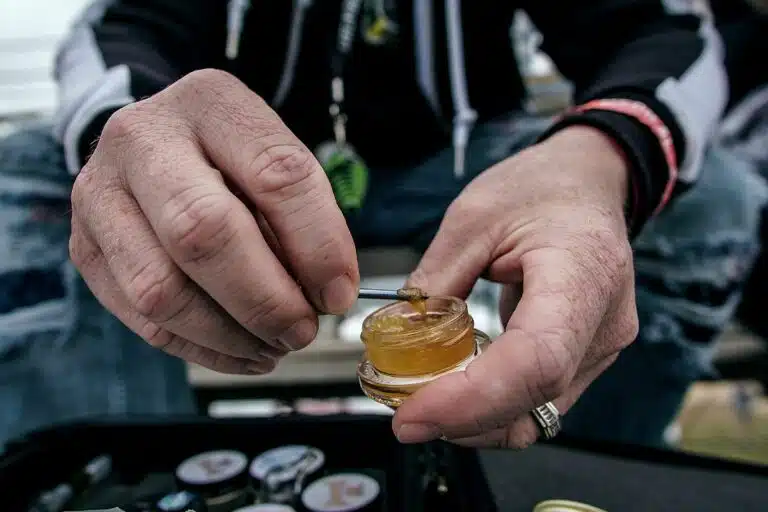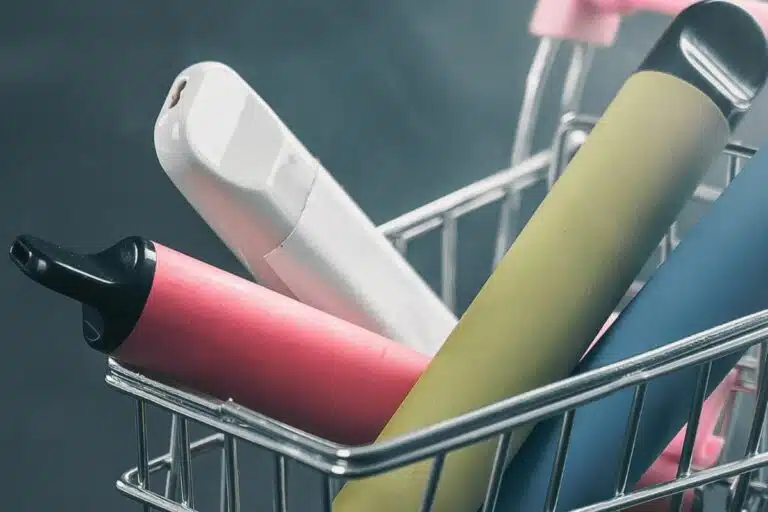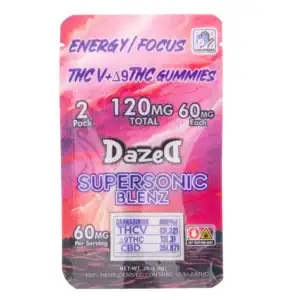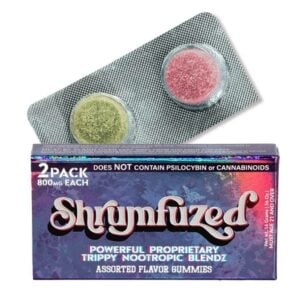What is Considered a High THCa? Understanding Potency Levels
Introduction to THCa
THCa, or tetrahydrocannabinolic acid, is a non-psychoactive compound found in various cannabis strains, including raw cannabis.
It is the precursor to THC, the psychoactive cannabinoid, and converts to THC when heated, which is often measured by its thc percentage.
- Introduction to THCa
- Importance of THCa Potency
- What Is Considered a High THCa Percentage?
- Factors Affecting THCa Levels
- Benefits of THCa
- How THCa Works
- THCa vs. THC
- THCa vs. CBD
- THCa Percentage and Potency
- Interpreting Lab Reports
- Measuring THCa Percentage
- Effects of THCa
- Risks and Considerations
- Tolerance and Dosing
- Common High THCa Strains
- Medical Uses of High THCa
- Consumption Methods
- Smoking vs. Eating THCa
- Cooking with THCa
- Storage and Handling
- Legal Considerations
- Lab Testing and Certification
- THCa and Drug Testing
- Quality Assurance
- Conclusion
- FAQ: High THCa Potency
Understanding THCa and its associated thca benefits is crucial for cannabis consumers seeking potential medical benefits and therapeutic effects without psychoactive effects.
THCa is typically consumed using raw cannabis compounds, through tinctures or unheated products, making consuming raw cannabis a popular choice to retain its non-intoxicating properties.
Importance of THCa Potency
Potency levels determine how strong a cannabis product may be once THCa is converted into THC.
Consumers rely on THCa percentages and higher thc percentage to estimate the potential effects of their cannabis.
High potency may be desired for medical relief or recreational intensity, depending on user preferences.
What Is Considered a High THCa Percentage?
THCa percentages above 20% are generally considered high.
Some premium strains may contain 25% or more, making them very potent once decarboxylated.
These levels in various cannabis strains are particularly important for users seeking powerful therapeutic or psychoactive effects.
Factors Affecting THCa Levels
| Factor | Impact on THCA Levels | Details |
|---|---|---|
| Genetics (Strain Type) | 🔼 Major Influence | Some strains are naturally high in THCA due to selective breeding (e.g., THCA-rich cultivars) |
| Growing Conditions | 🔼/🔽 Moderate to High | Light exposure, temperature, humidity, and soil nutrients all influence cannabinoid production |
| Harvest Timing | 🔼/🔽 High | Harvesting too early or too late can reduce peak THCA content |
| Curing and Drying | 🔼/🔽 Moderate | Improper curing can degrade THCA or convert it into THC |
| Storage Conditions | 🔽 Gradual Decline | Exposure to heat, light, or oxygen can slowly convert THCA into THC over time |
| Processing Method | 🔼/🔽 Variable | High heat or decarboxylation (smoking, baking) converts THCA to THC |
| Plant Health | 🔼/🔽 Moderate | Pests, disease, or nutrient imbalances may reduce cannabinoid synthesis |
| Lab Testing Variability | 🔼/🔽 Low to Moderate | Different labs may use slightly different testing techniques, affecting reported THCA % |
| Harvested Plant Part | 🔼/🔽 Moderate | THCA concentration is highest in trichome-rich parts like buds, lower in leaves or stems |
Genetics
- The genetic makeup of a cannabis plant significantly influences its THCa content.
- Some strains, including thca diamonds, are bred to have higher THCa levels, resulting in more potent effects when converted to THC.
- Genetics play a crucial role in determining the overall cannabinoid profile of a cannabis plant, including other cannabinoids.
Growing Conditions
- Environmental factors such as light, temperature, and humidity can impact THCa levels in cannabis plants.
- Optimized growing conditions can enhance THCa production, leading to higher potency cannabis products.
- Proper nutrient management and climate control are essential for maximizing THCa content.
Harvest Timing
- Timing the harvest correctly can impact the plant’s THCa levels.
- Harvesting too early or too late can lead to decreased cannabinoid concentration.
- Growers must monitor trichome development to determine the optimal time.
Benefits of THCa

THCa has potential health benefits, including the benefits of thca, and therapeutic benefits, including anti-inflammatory and neuroprotective properties.
It may aid in pain relief, nausea reduction, and appetite stimulation without causing psychoactive effects.
THCa is being researched for its potential therapeutic benefits in treating various medical conditions, including chronic pain and neurodegenerative diseases.
Unlike THC, THCa does not produce intoxicating effects, making it an attractive option for medical users.
How THCa Works
THCa interacts with the body differently than THC, largely through enzymes and minor receptor interactions. It may affect the endocannabinoid system indirectly, offering relief without euphoria.
The exact mechanisms are still being studied, but early findings show promising health applications.
THCa vs. THC
THCa and THC differ significantly in structure and function. THCa has a carboxyl group that prevents it from binding to CB1 receptors in the brain.
When heated, the carboxyl group is removed, converting THCa into THC and allowing it to produce a high.
THCa vs. CBD
CBD is another non-psychoactive cannabinoid often compared to THCa. While both offer therapeutic effects, they act on the body in different ways.
CBD is more commonly associated with anxiety and seizure relief, whereas THCa is linked to anti-inflammatory benefits.
THCa Percentage and Potency
A high THCa percentage indicates a higher potential for potent psychoactive effects after conversion to THC.
THCa percentages above 20% may result in intense effects when heated and consumed.
Understanding THCa percentage is essential for cannabis consumers to gauge the potential potency of their products.
Higher THCa percentages do not always translate to better products, as individual tolerance and desired effects play a significant role.
Interpreting Lab Reports
Cannabis lab reports list the amount of THCa and potential THC levels. Consumers can calculate total THC using the formula: (THCa % x 0.877) + THC %. Understanding this helps buyers assess product strength accurately.
Measuring THCa Percentage
Measuring THCa percentage involves laboratory testing, including chromatography and spectroscopy.
Accurate measurement of THCa, especially in relation to a higher thc percentage, is essential for determining the potential potency of cannabis products.
Reputable cannabis producers provide lab-tested products with clear labeling of THCa percentages.
Consumers should look for products with transparent labeling and third-party testing to ensure accuracy.
Effects of THCa
| Effect | Type | Description |
|---|---|---|
| Non-Psychoactive | Neutral | THCA does not cause a “high” unless it’s heated and converted to THC |
| Anti-Inflammatory | Positive | May help reduce inflammation, potentially aiding arthritis, IBD, and other conditions |
| Neuroprotective | Positive | Shown in studies to protect neurons; potential for Alzheimer’s and Parkinson’s support |
| Anti-Nausea | Positive | May reduce nausea and vomiting, especially in patients undergoing chemotherapy |
| Appetite Stimulation | Positive | Can support those with appetite loss or weight management needs |
| Antioxidant | Positive | Helps combat oxidative stress in the body, promoting overall wellness |
| Pain Relief | Positive | May reduce pain perception through interaction with the endocannabinoid system |
| Seizure Support | Positive (under study) | Shows promise in reducing seizure activity without psychoactive effects |
| Potential for Conversion | Cautionary | When heated (e.g., smoked, baked), THCA converts to THC, causing psychoactive effects |
| Legal Ambiguity | Cautionary | Legal status depends on Δ⁹-THC levels and state laws—must verify with lab reports (COA) |
THCa itself does not produce psychoactive properties but has potential therapeutic benefits.
The conversion of THCa, a non psychoactive precursor, to THC and the differences between thc and thca result in potent psychoactive effects, which can be intense and long-lasting.
Individual tolerance, consumption method, and product type influence the effects of THCa and THC.
Anecdotal evidence and research suggest that THCa may have anti-inflammatory, anti-nausea, and neuroprotective properties.
Risks and Considerations
High THCa percentages can lead to potent psychoactive effects, which may be overwhelming for some users.
Accurate dosing and careful consumption are crucial to avoid adverse effects, such as anxiety and paranoia.
Local laws and regulations regarding cannabis products with high THCa percentages vary, and consumers must be aware of these laws in the thca vs thc context.
Drug tests may detect THC, the converted form of THCa, and consumers should be cautious when using high THCa products.
Tolerance and Dosing
Each individual’s tolerance to cannabinoids differs. Beginners should start with lower doses even if using thca natural high-THCa products.
Microdosing can help users find their optimal dose without unpleasant side effects.
Common High THCa Strains

Popular high THCa strains include Gorilla Glue, Wedding Cake, and Girl Scout Cookies. These strains are known for their potent effects and therapeutic versatility.
Medical users often seek these strains along with thca powder for chronic pain, stress, or sleep disorders.
Medical Uses of High THCa
Medical patients often choose high THCa products for conditions like arthritis, epilepsy, and chronic bronchitis.
Non-psychoactive options like tinctures or raw cannabis can be used during the day.
Proper consultation with a medical professional is advised for high-THCa treatment plans.
Consumption Methods
Raw THCa can be consumed through juices, smoothies, or capsules. Heated methods like smoking or vaping convert THCa into THC, leading to psychoactive effects.
Edibles made with unheated cannabis or cannabis extracts, as well as thca vapes, retain more THCa content.
Smoking vs. Eating THCa
Smoking or vaping converts THCa into THC and delivers rapid effects. Eating raw THCa maintains its original form and avoids intoxication.
The choice between the two depends on user goals—therapeutic vs. recreational.
Cooking with THCa
| Dish | How to Prepare | THCA Use | Notes |
|---|---|---|---|
| Raw Cannabis Smoothie | Blend raw cannabis leaves or flower with fruits, yogurt, or milk | Preserves THCA | No heating; rich in THCA, vitamins, and fiber |
| THCA-Infused Salad | Chop raw cannabis leaves into fresh greens, drizzle with olive oil or lemon | Preserves THCA | Great for non-intoxicating wellness meals |
| Cold-Pressed THCA Juice | Juice raw cannabis buds with apples, ginger, or carrots | Preserves THCA | Use immediately to avoid THCA degradation |
| THCA Avocado Toast | Add chopped raw cannabis on top of avocado toast | Preserves THCA | Adds a peppery, herbaceous note |
| THCA-Infused Olive Oil | Mix raw cannabis in oil and let sit (no heat) for 24–48 hrs | Preserves THCA | Use for salad dressing or drizzle after cooking |
| Cannabis Pesto | Blend raw THCA-rich leaves with basil, garlic, nuts, and oil | Preserves THCA | Raw preparation retains full THCA content |
| Low-Temp Cannabis Tea | Steep raw cannabis leaves below 170°F (77°C) for 10–15 min | Mostly THCA preserved | Avoid boiling to prevent full decarboxylation |
| THCA Yogurt Bowl | Top yogurt with hemp seeds, berries, and chopped raw cannabis | Preserves THCA | Easy and nutrient-packed breakfast option |
| No-Bake Energy Balls | Mix oats, peanut butter, honey, and finely ground raw cannabis | Preserves THCA | Chill in fridge, no cooking required |
| Cannabis Wraps or Rolls | Use raw cannabis fan leaves to wrap veggie or rice fillings | Preserves THCA | Creative, raw edible for wellness users |
To preserve THCa, avoid high-heat cooking methods. Cold infusions, cannabis oil, or low-temp recipes help maintain THCa integrity. Cannabis-infused oils for salads are a popular option.
Storage and Handling
Proper storage and handling of cannabis products with high THCa percentages, as indicated on cannabis product labels, are crucial for maintaining potency.
Exposure to heat, light, and oxygen can cause THCa to convert to THC, reducing the product’s potency.
Consumers should store cannabis flower products in cool, dark places and use airtight containers to preserve THCa content.
Handling cannabis products with care can help prevent accidental conversion of THCa to THC.
Legal Considerations
THCa legality varies by jurisdiction. Some states treat THCa as hemp if it meets the delta-9 THC limit under the 2018 Farm Bill.
Others regulate it similarly to THC due to its potential for conversion. Always check local laws before purchasing or using high THCa products.
Lab Testing and Certification

Third-party lab tests ensure product safety and potency. Certificates of analysis (COAs) should show cannabinoid profiles and confirm low delta-9 THC if claimed. Products without lab reports should be avoided.
THCa and Drug Testing
While THCa in its raw form should not trigger drug tests, heat converts it into THC. This THC may be detectable in urine or blood screenings.
Users under drug testing protocols should use THCa products cautiously.
Quality Assurance
Buy cannabis products from licensed dispensaries or trusted online platforms. Look for brands that use organic cultivation practices and transparent sourcing.
Quality assurance includes batch numbers and contact information for inquiries.
Conclusion
Understanding what constitutes a good thca percentage and their potential effects is essential for cannabis consumers.
THCa has potential therapeutic benefits and can result in potent psychoactive effects when converted to THC.
Accurate dosing, careful consumption, and awareness of local laws are crucial for safe and effective use of high THCa products to prevent drug abuse.
Further research is needed to fully understand the benefits and risks of THCa and its potential applications in medicinal cannabis.
FAQ: High THCa Potency
What is considered a high THCa percentage?
A THCa percentage of 20% or higher is generally considered high and indicates strong potency once converted to THC.
Does high THCa mean the product is more potent?
Yes, higher THCa levels usually translate to stronger psychoactive effects when the product is decarboxylated.
Is THCa the same as THC?
No, THCa is the acidic, non-psychoactive form of THC and must be heated to convert into psychoactive THC.
Can THCa get you high?
Not in its raw form. THCa must be decarboxylated (heated) to produce intoxicating effects like THC.
How do I consume THCa without converting it to THC?
Use it raw in juices or tinctures that are not exposed to heat to preserve the non-psychoactive compound.
Is high THCa good for medical use?
Many patients prefer high THCa for its potential anti-inflammatory and neuroprotective benefits without the high.
Will THCa show up on a drug test?
Raw THCa typically won’t trigger a drug test, but once converted to THC, it may be detected.
How is THCa measured in cannabis products?
THCa is measured using lab tests such as chromatography, and results are typically shown on product labels.
What are the risks of high THCa products?
If decarboxylated, they can cause strong psychoactive effects which may not be suitable for beginners or sensitive users.












